This is the home page for a series of essays originally based on Swaledale/Arkengarthdale census data from 1841 to 1901, covering Birkdale to Marrick. Then came information from 19thC newspapers, and family papers. As more stories surface, or other researchers contact me with corrections or additions, I shall continue to update the collection.
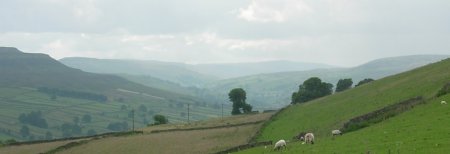
Contents
The links on the left, and below, lead to a series of essays I have written about the people of Swaledale in the 19thC. I have not attempted to write in detail about lead mining, or the Dales in general. These subjects are already well researched and described elsewhere (see the Useful Links in the Introduction). And if an intriguing trail occasionally takes me out of the dale I will happily follow it.
Here is more detail about the essay contents, with direct links to key sections of the longer ones. Some of these descriptions remind me of Victorian novels where a new chapter starts with a long: "In which our hero...." Well, most of these events took place during Queen Victoria's reign, so I won't apologise.
The Introduction explains what prompted me to write these essays. There are two lovely maps, and a list of useful websites and books, including the Upper Dales Family History Group's own publication "Those who Left the Dales" about families who left in the 18th and 19th centuries.
Who did what? describes what I found when I analysed the census data: the ratio of farmers to lead-miners (and how many were both); who had servants? what did the women do? who looked after the children? Over the years the balance of occupations swung from mining to farming as the lead ran out, and many households had a small-holding. Most daily needs were met locally - clog-makers, stonemasons, blacksmiths, bakers, grocers, the occasional tailor's shop and hardware store - but sometimes it was necessary to take the carrier's cart into Richmond, the nearest big town, where there was an impressive range of services and trades available.
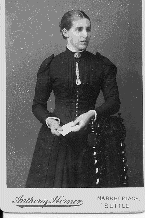
Farms and farming looks at the number and sizes of the Swaledale farms, a bit about farm wages and market prices, what an acre looks like, and at the kind of farming possible in this bleak and northern dale, where snowdrifts 20 feet deep were common and the few bridges were regularly washed away by the roaring river Swale. In 1880 the young woman who was to become my step-great-grandmother wrote to her cousin in South Dakota about the family's imminent move from Ivelet Heads up to a farm on Stainmore. She gives details of their farming plans, as well as news of friends and neighbours, so although the story really lives in the Family History area of our website, I have put a link here too.
Origins and destinations was my first attempt at finding out where Swaledalers came from, and went to. I started in a small way, very curious to know what sort of people moved in and out, and maybe to find out why. A surprising number came, went, came back again. Vicars and schoolteachers were rarely born locally and did not usually stay long (the censuses show how frequently vicars of all denominations moved; their children were usually born all over the country, often within a year or so of each other and home life must have been very unsettled). But many more dales folk moved out permanently and I traced the lead-mining families who were in the 1891 census but had moved out by 1901.
Transport and communications looks at the roads and bridges in Swaledale in the 19thC, and turnpikes and toll houses; how far you could go by cart or coach as the century progressed, and how the postal and telegraph systems were provided in the dale. The 19thC newspapers described how the railway so nearly came up Swaledale in the 1880s. At regular intervals the river Swale - reputed to be the fastest river in England - would flood and wash away bridges and roads as water roared down the narrow valley. It still does.
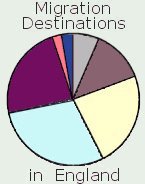
Migration in the 1880s - my longest essay - was written almost a year later, and more ambitiously looks at everyone who was in the dale in 1881 and not there in 1891. I traced marriages, and movement to the West Riding, and what kind of people stayed, and what kind moved on. I was surprised at how mobile the population was - very few people owned their own house and they moved regularly up and down the dale if family size, or work, required it. Sons left for a while and brought back a new wife; daughters whose fathers moved from lead to coal mining returned later with a husband who liked the idea of working in daylight rather than down a mine. And suddenly the later censuses show that many more wives or husbands had been born elsewhere. But many families left for good, in the decade up to 1891. A series of bad summers and winters had been just too much. Imported meat meant many beef farmers could no longer continue. Dairy farmers sent the younger generation off to supply milk to the growing population of large cities. The river flooded again, causing terrible devastation in the narrow valleys. Families with children moved to the mill towns of Lancashire or the West Riding, where the children could also be employed. Many went to Haworth where they lived as close to each other as they had been back in the dale. Out of 4,700 residents, I tracked down all but 121 of the ones who had been born in the dale, and had a fascinating time doing it. By this stage of my research I had got to know the families, so this essay mentions many more names than my earlier essays.
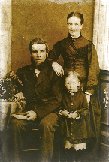
Births and marriages is a detailed analysis of the census data which reveals family sizes, the local birth rate, age at marriage. I then went on to investigate deaths in childbirth (I plan a further essay about infant mortality), contraception, illegitimacy, and second marriages.
Home ownership in 1870 is based on a lucky find in the North Yorkshire County Records Office, which enabled me to discover the surprisingly high proportion of renters, and the surprisingly low number of owner-occupiers. Again I list names. A local newspaper gave details of a huge sale forced by Chancery, which I write about here, and another chance find uncovered a wonderful story of the 1882 local by-election and its effect on Swaledale's tenant farmers.
The capable Margaret Tiplady is a diversion into the story of one couple. All the details are there in the censuses and this is the one story here which was written by John (whose own history essays and electronics articles can be accessed from the Home page button at the top of this page).
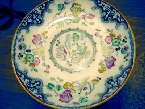
Nappa Hall connections is another short diversion into the Wensleydale history of the breakfast set which was displayed with such symmetry on my mother's prized Ercol dresser.
Metcalfes on Stainmore is an extended version of the story I wrote for inclusion in the UDFHG Anniversary book I have already mentioned. By the middle of the 19thC, the high moorlands of South Stainmore in Westmorland contained about twenty farms. Fifteen of them belonged to members of one family - the children and grandchildren of George and Ann Metcalfe of Ivelet Heads in Swaledale, and one of them married my great-grandfather.
Census Explanatory notes has a map showing the different census district boundaries for Swaledale, explains what the census data means, and suggests ways in which you could use the data yourself. And The original data describes the rules I used when standardising the census transcripts and assigning an occupation to everyone, and some odd things I noticed on the way.

